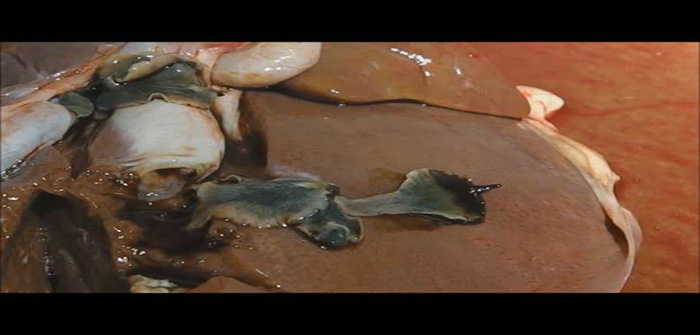The risk of parasitic disease and production loss from gastrointestinal worms and liver fluke is expected to be high this autumn, according to Merial Animal Health and the NADIS Parasite Forecast. Sheep and cattle farmers are advised to implement parasite control plans to reduce the risk to animals through winter.
Prolonged wet and mild weather in recent months has given rise to late flushes of infective larvae on pasture. Sheep are likely to face increased challenge from gastrointestinal worms in the coming months that could lead to parasitic gastroenteritis (PGE). Heavy infestations of gutworms may cause foetid diarrhoea (black scour) and rapid weight loss.
Worm-burdens in lambs slow growth and may delay finishing times. In overwintering breeding animals worm burdens may reduce thrive over winter, leading to weight loss and lack of condition. A parasite control plan including targeted anthelmintic treatments for worms should be followed, with advice from the farm vet or animal health adviser, to reduce the impact on production and lessen pasture contamination.
Merial Animal Health’s ruminant technical manager, Sioned Timothy, said: “Its good practice for sheep farmers to monitor liveweight gain in lambs or perform worm faecal egg counts (FEC) to determine the need for anthelmintic treatment of lambs at this time of year. Generally speaking, blanket pre-tupping treatments should be avoided, and instead farmers should target only at leaner ewes, gimmers, or sheep with dags.
“The number of ewes requiring treatment at this time of year should make up no more than five per cent of the group. If, despite good grazing, more than five per cent of a flock are in poor condition farmers should ask their veterinary surgeon to investigate the potential causes.”
Whilst anthelmintic treatment of all breeding females pre-tupping is rarely necessary, rams are often neglected at this time of year. Performing FECs will help identify whether anthelmintic treatment of these individuals is necessary.
Industry representatives are urging sheep farmers to improve their knowledge of the and symptoms of liver fluke, the parasites lifecycle and the risk factors that can contribute to disease outbreaks. Their veterinary surgeon or animal health adviser are well placed to help assess the risk at farm level and to formulate a bespoke prevention strategy to protect flock welfare and profitability.
There is a high risk of acute fluke in sheep in western Scotland and south Wales this autumn. Treatment for acute fluke will be necessary on farms in high-risk areas, especially where there is a historic liver fluke challenge.


